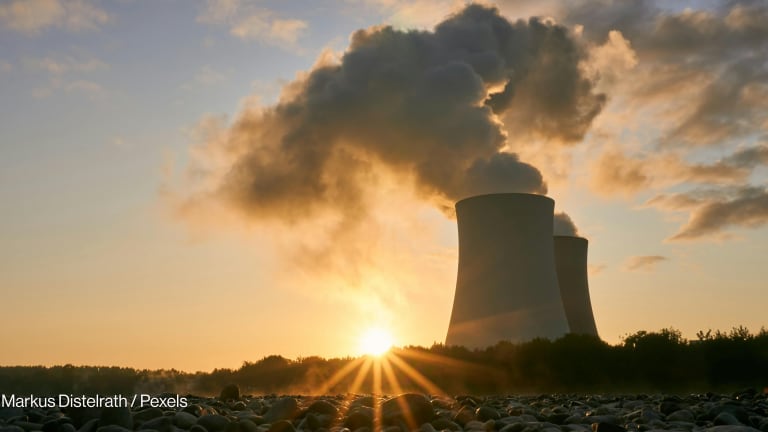
MANILA — On its 51st anniversary, the Asian Development Bank presented a multilateral institution determined to remain relevant in a rapidly changing region, working to strengthen operations that serve its purpose and letting go of those that don’t.
The past two years have seen the bank invite critique of its practices and examine its own shortcomings to ensure ADB can deliver for a client base moving toward middle and upper- middle income, without leaving people behind in the process.
ADB President Takehiko Nakao on Saturday committed to “reinventing” the bank, whose annual operations reached a record $32.2 billion in 2017, to meet the challenges of a transforming Asia.
Asia and the Pacific are at the heart of the renewables boom and access to electricity has increased over the past 25 years, but nearly 500 million people in the region still live without electricity. Inequality declined in some member countries, but 326 million people continue to live in extreme poverty, according to the bank’s 2017 Development Effectiveness Review presented at the meeting.
Catch up on our coverage of the ADB Annual Meetings
► 3 things on ADB’s to-do list, according to civil society organizations
► ADB aims to break down silos by ‘building, buying, borrowing’ staff
► The energy sector is changing, but is ADB’s energy department?
Many conversations revolved around the bank’s role in inclusive development and ensuring that development gains are shared by everyone. In governors’ remarks on the final day of the meetings, representatives from Canada, Australia, the U.K., and more urged the bank to ramp up efforts to support the most vulnerable, including women and girls and people with disabilities, and to widen its understanding of crises.
The bank continued to hash out its new corporate guidelines, dubbed Strategy 2030, which in its draft form outlines expanded private sector operations to address market gaps across the region, doubles down on ADB’s desire to be seen as a knowledge provider, and reiterates the bank’s commitment to energy and climate change work. The bank also pushed its regional cooperation work, announcing the Asia Regional Trade and Connectivity Fund in partnership with the United Kingdom’s Department for International Development ahead of the meeting.
At the close of the four days, here are some of the key conversations that took place in Manila.
1. What Strategy 2030 means for operations
The bank’s new corporate strategy was once again up for discussion prior to its finalization in July, and Tomoyuki Kimura, director general of ADB’s strategy, policy, and review department, shed some light on what it will mean for the bank internally.
The new strategy seeks to break down two of the bank’s current silos: thematic sectors and sovereign versus non-sovereign funding. To do so, the institution will need to adopt a multi-sectoral mindset, as well as more firmly operationalize several exercises, such as lending staff to other teams or creating new cross-divisional task teams, which are already happening across the bank.
To fill skills gaps and better respond to clients’ changing needs, Kimura champions a “3 B’s” process of building, buying, or borrowing staff.
“Build means basically we build the skills in house by reskilling people, re-balancing staff skills mix or recruiting people with new skills,” Kimura explained. “Buy [means] we can buy through consultancy service. Borrow — this is partnership. So we have to look at other development partners, think tanks, academia, private sector so that we can borrow their expertise by working together as partners.”
2. Increased private sector engagement, and its implications
ADB will continue to expand its assistance for private sector development: “A key measure of ADB’s success will be the volume and quality of additional resources it mobilizes on top of its own financing,” the Strategy 2030 draft document reads.
The bank will promote private sector participation in infrastructure, and put a strong focus on the development impact of its private sector operations while ensuring profitability.
The concern is that these projects ultimately receive less oversight from the bank. Information disclosure to communities is also much murkier in these deals, civil society members told Devex at the meetings.
Michael Barrow, head of the bank’s Private Sector Operations Department, said he is open to the safeguards discussion, but reiterated that his department applies the same safeguard policy as any other in ADB — and that he has also increased his safeguard staff by 13 in the past year as private sector operations continue to grow.
3. Questions about China and AIIB
China’s economic rise and increased lending capacity has prompted talks on what that means in terms of its relationship with multilateral institutions. This was a big topic at the recently concluded World Bank Spring Meetings, and a question participants shared during last week’s ADB annual meetings.
ADB President Takehiko Nakao himself commented on how small the amount of the bank’s lending is to China — 12 to 15 percent of ADB lending. And yet, he maintains the bank wants to continue to be a lending partner for the Asian giant, with a combination of financing and knowledge expertise, such as on renewable energy. One of China’s biggest budget areas is climate related.
Meanwhile, ADB’s relationship with the China-led Asian Infrastructure Investment Bank continued to receive attention. Publicly, the two banks are sticking to talking points of collaboration over competition, although Nakao became a little more candid in identifying the differences between the two banks. AIIB, he said, is mainly focused on investing in infrastructure, while ADB, on top of its infrastructure lending, is also supporting a number of social sectors such as education and health.
If there’s an area where both banks require similarly considerable investment, it’s in strengthening their accountability mechanisms, according to civil society actors. As Rayyan Hassan, executive director of the NGO Forum on ADB, said during one of the sessions, ADB and AIIB must both reconsider financing projects in countries with governance issues.
“If everything is nice and democratic, it would have been an easier world for us. But the truth is, it’s not,” he said, adding that sometimes, “filing a complaint might be secondary to being alive.”
4. A commitment to energy
Energy makes up nearly 25 percent of the bank’s portfolio, and ADB is determined to be at the forefront of supporting what works for communities today, such as mini-grids enabled by energy storage, according to Yongping Zhai, chief of the bank’s energy sector group.
Others present at the annual meeting were worried that the institution’s nearly 10-year-old energy policy no longer speaks to today’s energy requirements. Some of the ADB’s projects associated with coal — such as coal washeries and the idea of carbon capture, for example — can no longer pass as long-term solutions, considering the risks of climate change as well as community needs, said Sreedhar Ramamurthi, managing trustee for nonprofit research and community development organization, Environics Trust.
But Zhai is confident the bank’s 2009 energy policy remains “very relevant to SDG and Paris agreement,” considering it prioritizes energy access, renewable energy, and energy efficiency.
As the bank continues to discuss its Strategy 2030, which has identified seven operational priorities, Zhai added that “we will prepare energy sector action plan so to contribute effectively to Strategy 2030.”
5. ADB boosting Pacific presence
Even before the Manila meetings ended, everyone was already looking to what’s next: ADB’s 52nd annual meeting taking place in Fiji. The event is being touted as a milestone for the bank. It will be the first time ADB, or any development bank, will have a big event in the Pacific island nation.
This sends a signal of the bank’s increased commitments in the Pacific. The bank’s portfolio for the region increased from $500 million to $2.6 billion by the end of 2017. The latest grants signed by the bank during the annual meetings, which has a combined total of over $35 million, is aimed at boosting internet connectivity in the Pacific island countries of Kiribati and Nauru. And within the year, the bank could be transitioning long-term consultants in their development coordination offices to full-time staff.









